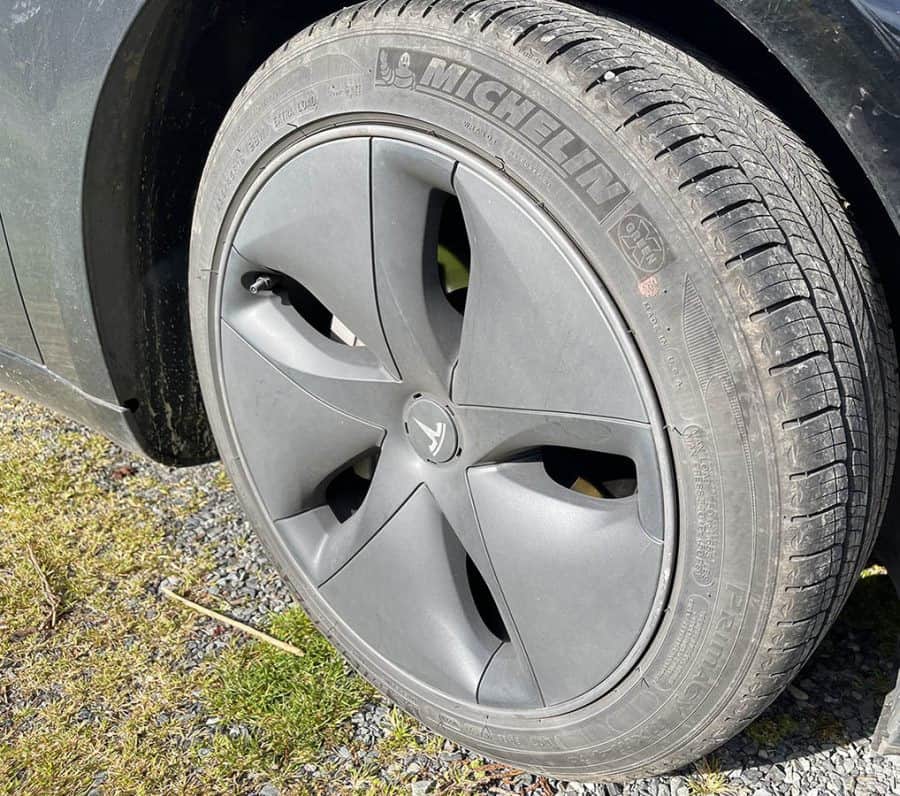Why Are Tesla Windshields Orange When Wet?
Tesla cars have become known for their sleek designs and cutting-edge technology. One feature of Tesla cars that has garnered attention is the appearance of the windshield when wet. Many people have observed that the windshield of a Tesla car can look orange when it is wet. This phenomenon has puzzled car owners and enthusiasts alike, and has led to questions about what causes this unique effect. To understand why Tesla windshields can look orange when wet, we need to delve into the physics of light and color. When light passes through a prism, it is refracted and separates into its component colors, creating a rainbow. This phenomenon is known as dispersion, and it occurs because each color of light has a different wavelength, and therefore bends at a slightly different angle when it passes through a prism. In the case of Tesla windshields, the orange color that is observed when the windshield is wet is due to a similar phenomenon, but in reverse. Instead of light passing through a prism, it is reflecting off of a surface, in this case, the surface of the water droplets on the windshield. When light reflects off of a surface, it can interfere with other light waves that are also reflecting off of that surface. This interference can cause certain wavelengths of light to be amplified, while others are cancelled out, resulting in a pattern of colors. This pattern of colors is known as thin-film interference, and it is what causes the orange color to appear on a wet Tesla windshield. When water droplets are present on the windshield, they form a thin film of water that is sandwiched between the air and the glass surface. The thickness of this film of water is what determines the color that is observed. As light passes through the thin film of water, some of it is reflected off of the top surface of the water droplets, while some of it passes through the water and is reflected off of the bottom surface. When these two waves of light meet, they can interfere with each other, causing certain wavelengths of light to be amplified, while others are cancelled out. The thickness of the water film determines which wavelengths of light are amplified and cancelled out. When the thickness of the water film is equal to the wavelength of orange light, that color will be amplified and appear more prominent. This is what causes the orange color to be observed on a wet Tesla windshield. It is important to note that this phenomenon is not unique to Tesla windshields, and can be observed on any surface where a thin film of water is present. However, it is more noticeable on Tesla windshields due to the angle of incidence of the light and the specific thickness of the water droplets. In addition to the scientific explanation for why Tesla windshields can look orange when wet, there are also practical implications for car owners. The color of the windshield can impact visibility, which is especially important when driving in adverse weather conditions. When the windshield is wet, it is important to make sure that the windshield wipers are functioning properly and that the windshield is clean. A dirty or damaged windshield can impact visibility, making it difficult to see other vehicles and obstacles on the road. In conclusion, the phenomenon of a Tesla windshield appearing orange when wet is due to a scientific phenomenon known as thin-film interference. When light reflects off of the surface of the water droplets on the windshield, it can interfere with other light waves, causing certain wavelengths of light to be amplified and others to be cancelled out, resulting in the appearance of the orange color. While this phenomenon is not unique to Tesla windshields, it is more noticeable on them due to the specific angle of incidence of the light and the thickness of the water droplets. While the appearance of the windshield may be a fascinating scientific phenomenon, it is important for drivers to remember that it can impact visibility, especially in adverse weather conditions. Therefore, it is important to keep the windshield clean and properly maintained, and to ensure that the windshield wipers are functioning properly. Furthermore, this phenomenon also highlights the importance of understanding the science behind everyday phenomena. While we may take for granted the colors we observe in our everyday lives, understanding the scientific principles that underlie them can enhance our appreciation of the natural world and the technology we interact with. In addition to the scientific principles involved in the appearance of the Tesla windshield when wet, it is worth noting that the design of the windshield itself may also play a role. Tesla windshields are designed to be aerodynamic, with a sleek and streamlined shape that reduces air resistance and improves fuel efficiency. This design may also contribute to the unique appearance of the windshield when wet, as the angle and shape of the glass may impact the way light reflects off of the water droplets. Overall, the appearance of a Tesla windshield when wet is a fascinating scientific phenomenon that highlights the complex interactions between light, water, and the surfaces we interact with in our everyday lives. While the appearance of the orange color may be visually striking, it is important to remember the practical implications for visibility and safety when driving in adverse weather conditions. Understanding the science behind this phenomenon can enhance our appreciation of the natural world and the technology we interact with, and may even inspire us to explore other everyday phenomena with a sense of curiosity and wonder.
Why Are Tesla Windshields Orange When Wet? Read More »










